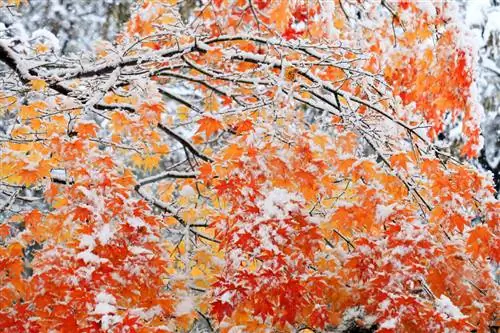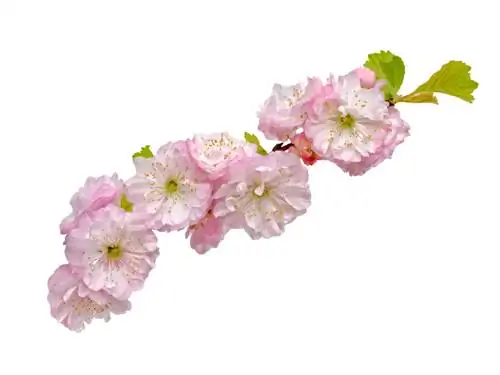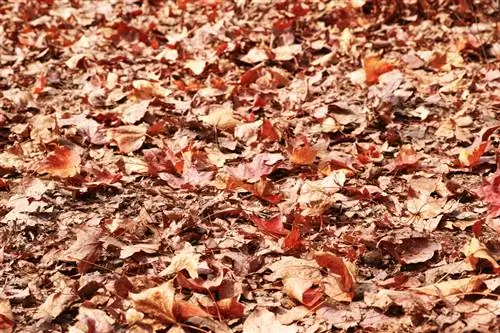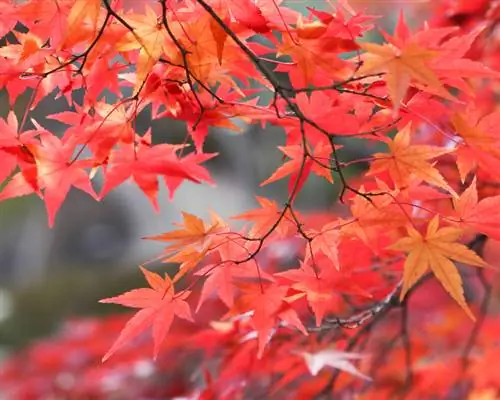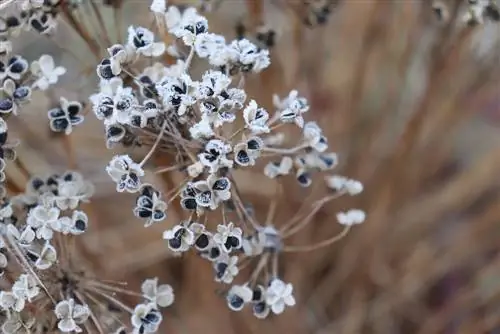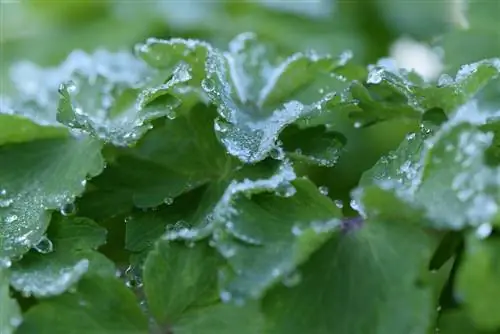- Author admin [email protected].
- Public 2023-12-16 16:46.
- Last modified 2025-01-23 11:20.
Acer palmatum or Japanese maple is a very popular tree for the garden or for container cultivation. The ornamental tree, native to East Asia, offers several advantages to gardeners and enthusiasts. The plant grows rather slowly and remains quite small, but has a high visual value due to the beautiful foliage and the strong autumn colors. In addition, the Japanese Japanese maple - regardless of whether it is green or red Japanese maple - is considered comparatively easy to care for and robust, and the small tree is also hardy in this country.

Is the Japanese maple hardy and how do I protect it?
Fan maples are hardy in Central Europe, but young plants require winter protection with leaves or brushwood. Potted plants should receive root protection and Japanese maple bonsai should be allowed to overwinter frost-free. A sunny to semi-shady location sheltered from the wind is ideal.
Climate in the Japanese homeland is similar to that in Central Europe
Faraway Japan, home of the distinctive Japanese maples, is larger than Germany and also extends over an area of around 3,000 kilometers and thus across several climate zones. Hokkaido and Honshu are among the four main islands of the archipelago and together make up around 82 percent of the country's area. On both islands the winters are long and cold, while the summers are short and mild. Hokkaido has a subarctic climate, while Honshu is in a temperate climate zone. Both islands are home to the Japanese maples, which are particularly widespread in the mountains. These small trees are therefore naturally used to a rather cool climate and are considered hardy even in Central Europe.
Young and potted plants need light winter protection
While older, planted specimens generally do not require additional winter protection, young and potted maples should be provided with one. Young plants, especially if they have been in their location for less than four years, should be covered with leaves and / or brushwood. This measure prevents the roots, which are only very shallow underground, from freezing. For the same reason, the roots of Japanese maples grown in containers must be protected, ideally with a garden fleece or similar cover. The planter is placed on an insulating surface such as wood (€33.00 on Amazon) or Styrofoam.
Fan maple bonsai is best overwintered frost-free
Japanese maple bonsai planted in shallow bowls, on the other hand, should not overwinter outdoors, but rather in a frost-free and cool place in the house or greenhouse. The location does not have to be bright, after all it is a deciduous tree species.
Tip
However, the actual winter hardiness of the plants depends primarily on their location. The Japanese maple prefers a sunny to light, semi-shady location, which should be in a sheltered place if possible - the tree is particularly immune to drafts or wind.

